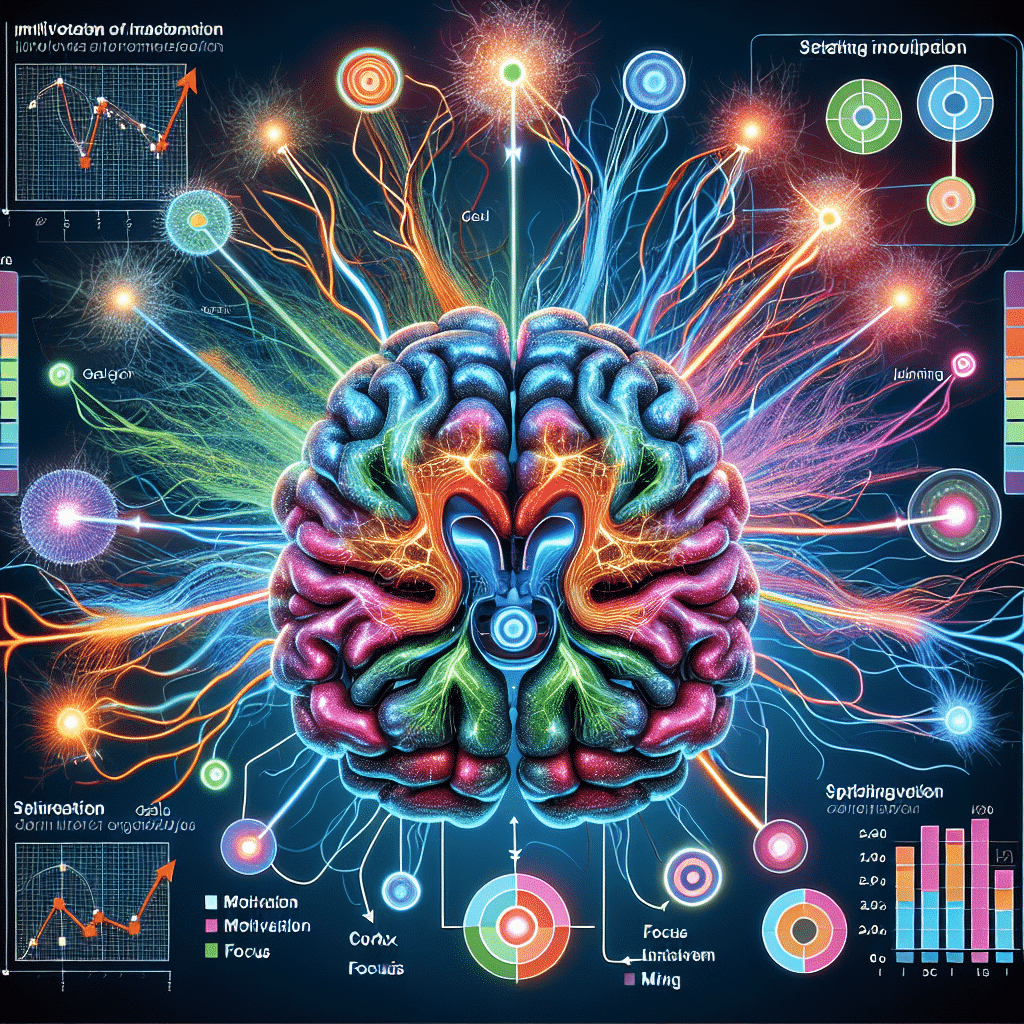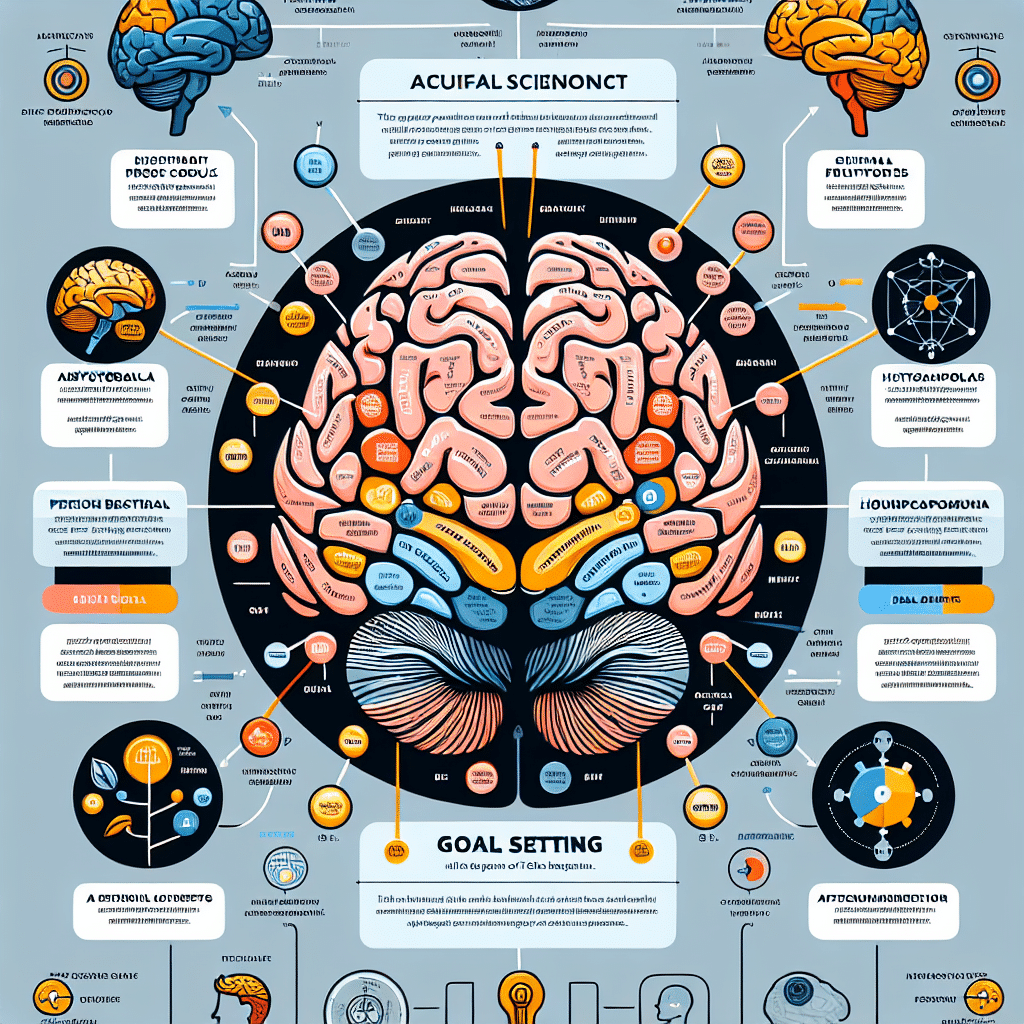
Goal setting plays a crucial role in the field of neuroscience, as it helps to understand how the brain functions and responds to achieving objectives. By delving into the neuroscience of goal setting, we can gain insights into the mechanisms that drive motivation, behavior, and ultimately, success.
The brain’s reward system and goal achievement
Goal setting involves a complex interplay of neurological processes in the brain, particularly in the brain’s reward system. When we set goals and work towards achieving them, our brain releases dopamine, a neurotransmitter associated with pleasure and reward. Dopamine plays a crucial role in motivating us to take action, stay focused, and persist in our efforts until we reach our goals.
Studies have shown that the anticipation of a reward, such as accomplishing a goal, activates the brain’s reward pathways, including the mesolimbic dopamine system. As we make progress towards our goals, our brain continues to release dopamine, reinforcing the behavior and making us more likely to continue working towards achieving our goals.
Furthermore, when we successfully achieve a goal, our brain experiences a surge of dopamine, creating a sense of satisfaction and pleasure. This positive reinforcement strengthens the neural connections associated with the goal-directed behavior, making it more likely that we will set and pursue future goals.
Neuroscientists have also found that individuals who regularly set and achieve goals have higher levels of dopamine receptors in the brain, which may contribute to their greater motivation, focus, and resilience in the face of challenges. In contrast, disruptions in the brain’s dopamine system, such as in conditions like depression or addiction, can impair a person’s ability to set and accomplish goals.
By understanding the role of dopamine and the brain’s reward system in goal achievement, we can optimize our goal-setting strategies to enhance our brain health and overall well-being. Setting realistic and challenging goals, breaking them down into smaller achievable steps, and celebrating small victories along the way can help to maintain a steady flow of dopamine and keep us motivated and engaged in the pursuit of our goals.
Neuroplasticity and setting and accomplishing goals
Neuroplasticity refers to the brain’s ability to reorganize itself by forming new neural connections throughout life. When it comes to goal setting, neuroplasticity plays a crucial role in our ability to set and accomplish goals. When we set a goal and work towards achieving it, our brain forms new pathways and connections that support this goal-directed behavior.
Studies have shown that individuals who actively engage in goal-setting activities have higher levels of neuroplasticity compared to those who do not set goals. This means that by setting and working towards our goals, we are not only achieving the desired outcomes but also enhancing our brain’s capacity to adapt and change.
Furthermore, the process of accomplishing goals can lead to the release of neurotransmitters like dopamine, which plays a key role in motivation and reward. Dopamine is often referred to as the “feel-good” neurotransmitter because it is released when we achieve a goal, experience pleasure, or engage in rewarding activities. This chemical response reinforces our goal-directed behavior and motivates us to continue working towards our objectives.
Additionally, setting and achieving goals can have a positive impact on stress levels and overall mental well-being. When we set specific, achievable goals, our brain releases stress-reducing hormones like oxytocin, which helps alleviate feelings of anxiety and tension. By actively working towards our goals, we can not only improve our cognitive function but also enhance our emotional resilience and overall brain health.
Overall, the neuroscience of goal setting highlights the intricate relationship between our brain’s plasticity, neurotransmitters, and goal-directed behavior. By understanding how our brain responds to goal setting and achievement, we can optimize our approach to setting and accomplishing goals to promote better brain health and cognitive function.

Dopamine and goal-directed behavior
Dopamine is a neurotransmitter that plays a crucial role in goal-directed behavior. When we set a goal and work towards achieving it, our brain releases dopamine, which is often referred to as the “feel-good” chemical. This dopamine release serves as a reward for our brain, motivating us to continue pursuing our goals.
Research has shown that individuals with higher levels of dopamine tend to exhibit higher levels of motivation and persistence in goal-directed tasks. This suggests that dopamine is not only involved in the initial stages of goal setting but also in the maintenance of motivation throughout the process of achieving the goal.
The role of dopamine in reinforcement learning
Furthermore, dopamine is also linked to reinforcement learning, where our brain learns from the outcomes of our actions. When we achieve a goal, our brain experiences a surge of dopamine, reinforcing the neural pathways associated with the actions that led to goal achievement. This reinforcement mechanism strengthens the connection between goal-directed behavior and the associated rewards, making it more likely for us to engage in similar behaviors in the future.
Optimizing dopamine release for goal setting
There are several strategies that can help optimize dopamine release for goal setting. Breaking down goals into smaller, achievable tasks can provide a sense of accomplishment and trigger dopamine release with each milestone achieved. Additionally, incorporating elements of novelty and challenge into goal-setting can stimulate dopamine release, keeping motivation levels high.
It is important to note that dopamine release can also be influenced by external factors such as stress, sleep deprivation, and poor nutrition. Therefore, taking care of our overall well-being through stress management, adequate sleep, and a balanced diet is essential for optimizing dopamine levels and supporting goal-directed behavior.
In conclusion, understanding the role of dopamine in goal-directed behavior can help us leverage this neurochemical to enhance our motivation, persistence, and overall success in achieving our goals. By using strategies to optimize dopamine release and supporting our brain’s reward system, we can set ourselves up for success in goal setting and accomplishment.
Strategies to optimize goal setting for brain health
When it comes to optimizing goal setting for brain health, there are several key strategies that can be implemented to enhance the neuroscience of goal achievement. These strategies focus on leveraging the brain’s reward system, neuroplasticity, dopamine, and other cognitive functions to maximize the effectiveness of goal setting.
1. Set SMART goals:
SMART goals are specific, measurable, achievable, relevant, and time-bound. By setting clear and achievable goals, you can activate the brain’s reward system more effectively, leading to enhanced motivation and focus on goal-directed behavior.
2. Break down goals into smaller tasks:
Breaking down larger goals into smaller, manageable tasks can help to reduce overwhelm and increase the likelihood of goal attainment. This approach leverages neuroplasticity, as the brain can adapt and rewire itself more easily when tasks are broken down into smaller increments.
3. Celebrate achievements:
Recognizing and celebrating small wins along the way can boost dopamine levels in the brain, reinforcing positive behavior and motivating you to continue working towards your goals. This positive reinforcement can help to create a cycle of success and achievement.
4. Practice visualization:
Visualizing the successful completion of your goals can activate the same neural pathways in the brain as actually achieving them. By regularly visualizing your goals, you can enhance motivation, focus, and determination, increasing the likelihood of successful goal attainment.
5. Stay flexible and adapt goals as needed:
Flexibility is key when it comes to goal setting for brain health. Being able to adjust and adapt your goals in response to changing circumstances or new information can help to maintain motivation and momentum towards goal achievement. This adaptive approach leverages neuroplasticity and strengthens cognitive resilience.
By implementing these strategies to optimize goal setting for brain health, you can harness the power of neuroscience to enhance motivation, focus, and overall cognitive function, ultimately leading to greater success in achieving your goals.

Summary
Goal setting plays a crucial role in neuroscience as it motivates behavior and drives individuals towards achieving desired outcomes. The brain’s reward system is activated when goals are accomplished, reinforcing the behavior and creating a sense of satisfaction.
Neuroplasticity allows the brain to rewire itself to support goal-directed behavior, leading to long-term changes in neural pathways. Dopamine, a neurotransmitter associated with reward and motivation, is released when goals are set and achieved, further encouraging goal-directed behavior.
Optimizing goal setting for brain health involves strategies such as setting specific and achievable goals, breaking them down into smaller tasks, and regularly evaluating progress to keep the brain engaged and motivated. By understanding the neuroscience of goal setting, individuals can harness the power of their brain to achieve success and fulfillment.






